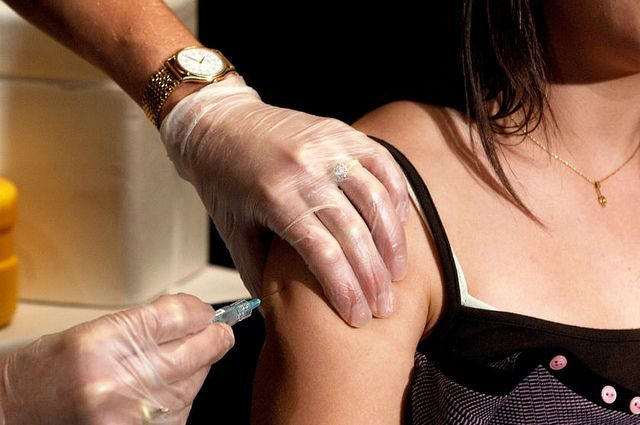After HPV Vaccinations Rates of Genital Warts Decline Significantly in Women, but Not Men

Rates of condyloma, or genital warts, among young women have fallen significantly in the past few years, according to new research.
Swedish researchers from the Karolinska Institutet in Stockholm found that the rate of genital warts incidences among women between the ages of 17 and 18 fell by more than 25 percent from 2006 to 2010.
Rates among all women under the age of 25 also showed significant decreases.
However, incidence rates among men did not decline, which researchers say reduces the possibility of herd immunity effects during the four year period examined in the study.
Genital warts, often referred to as anogenital warts or condyloma acuminate, are very infectious and are primarily transmitted through sexual intercourse or skin-to-skin contact.
The latest findings, published in the Journal of Infectious Diseases, suggest that the recent introduction of Sweden's national Human papillomavirus vaccine program may have played a part in reducing new cases of genital warts among young people.
Experts estimate that over 90 percent of genital warts are caused by the Human papillomavirus (HPV) type 6 and type 11.
HPV is the most common sexually transmitted infection in the U.S., and is believed to be the leading cause of cervical cancer, according to the Centers for Disease Control and Prevention. The infection can also lead to other health problems like genital cancer, anal cancer, head and neck cancer and genital warts.
Earlier this month, scientists from a separate U.S. study found that the HPV vaccine, which protects against four strains of HPV, not only protected vaccinated women, but it also protected unvaccinated girls and young women from infection, suggesting that the vaccine can promote herd protection, a reduction in infection rates among the unimmunized due to lower rates of infections among others living in their community who might otherwise be transmitting the disease.
Researchers from the Cincinnati Children's Hospital Medical Center found looked at two groups of women between the ages of 13 and 26 who had already had sexual contact. Researchers compared a group of women had been treated at the clinic before the HPV vaccine in 2006 or 2007 to another group of women seen at the clinic in 2009 or 2010, after the vaccines became widely available.
Scientists found that from 2006 to 2010, the prevalence of the four HPV strains protected by the vaccine fell by about 60 percent, from 32 percent in 2006 to 13 percent four years after.
While there was a 70 percent drop of HPV infection among the vaccinated from 32 percent to 10 percent, rates of infection among the unvaccinated fell by half, from 30 percent to 15 percent.
Published by Medicaldaily.com



























